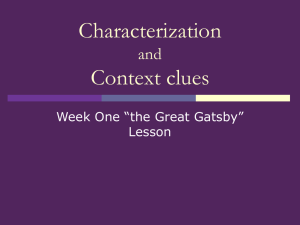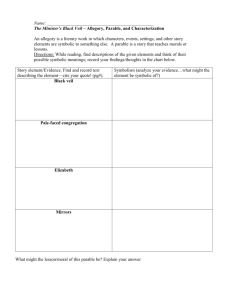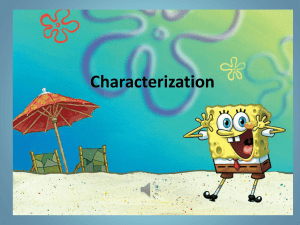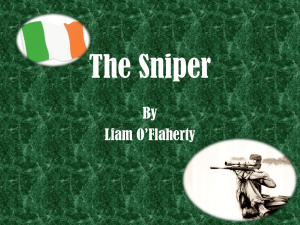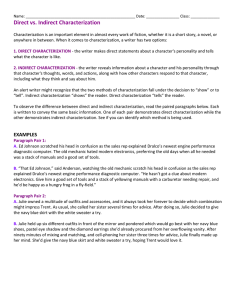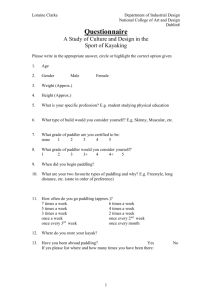Direct Characterization (TELLING): The author (or another character)
advertisement
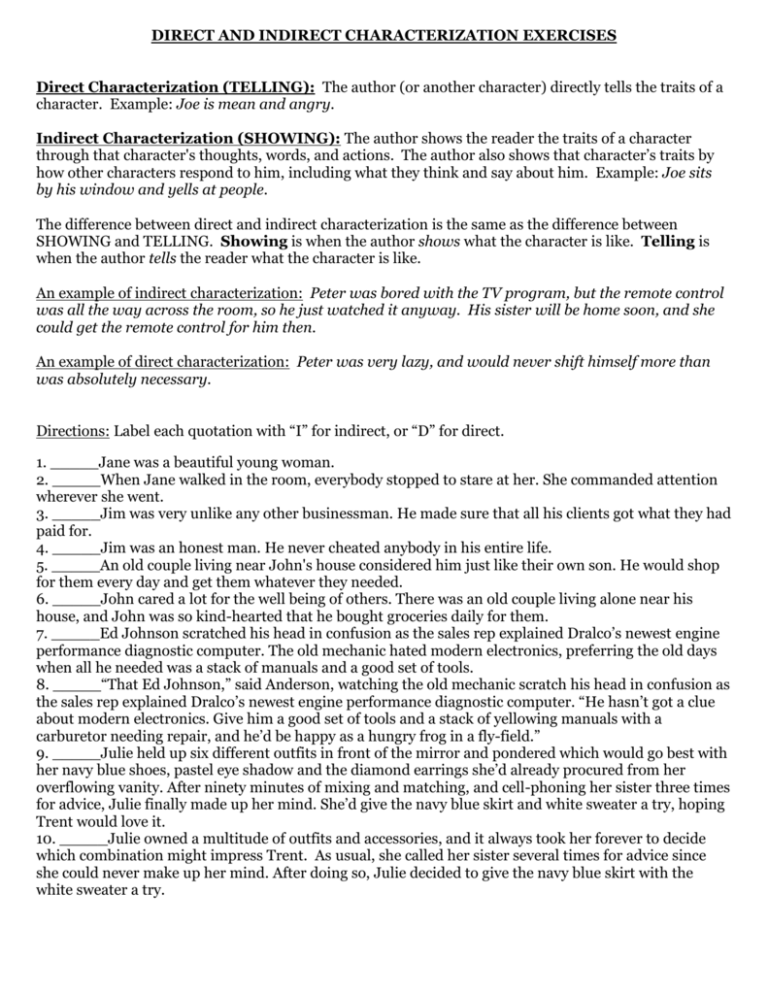
DIRECT AND INDIRECT CHARACTERIZATION EXERCISES Direct Characterization (TELLING): The author (or another character) directly tells the traits of a character. Example: Joe is mean and angry. Indirect Characterization (SHOWING): The author shows the reader the traits of a character through that character's thoughts, words, and actions. The author also shows that character’s traits by how other characters respond to him, including what they think and say about him. Example: Joe sits by his window and yells at people. The difference between direct and indirect characterization is the same as the difference between SHOWING and TELLING. Showing is when the author shows what the character is like. Telling is when the author tells the reader what the character is like. An example of indirect characterization: Peter was bored with the TV program, but the remote control was all the way across the room, so he just watched it anyway. His sister will be home soon, and she could get the remote control for him then. An example of direct characterization: Peter was very lazy, and would never shift himself more than was absolutely necessary. Directions: Label each quotation with “I” for indirect, or “D” for direct. 1. _____Jane was a beautiful young woman. 2. _____When Jane walked in the room, everybody stopped to stare at her. She commanded attention wherever she went. 3. _____Jim was very unlike any other businessman. He made sure that all his clients got what they had paid for. 4. _____Jim was an honest man. He never cheated anybody in his entire life. 5. _____An old couple living near John's house considered him just like their own son. He would shop for them every day and get them whatever they needed. 6. _____John cared a lot for the well being of others. There was an old couple living alone near his house, and John was so kind-hearted that he bought groceries daily for them. 7. _____Ed Johnson scratched his head in confusion as the sales rep explained Dralco’s newest engine performance diagnostic computer. The old mechanic hated modern electronics, preferring the old days when all he needed was a stack of manuals and a good set of tools. 8. _____“That Ed Johnson,” said Anderson, watching the old mechanic scratch his head in confusion as the sales rep explained Dralco’s newest engine performance diagnostic computer. “He hasn’t got a clue about modern electronics. Give him a good set of tools and a stack of yellowing manuals with a carburetor needing repair, and he’d be happy as a hungry frog in a fly-field.” 9. _____Julie held up six different outfits in front of the mirror and pondered which would go best with her navy blue shoes, pastel eye shadow and the diamond earrings she’d already procured from her overflowing vanity. After ninety minutes of mixing and matching, and cell-phoning her sister three times for advice, Julie finally made up her mind. She’d give the navy blue skirt and white sweater a try, hoping Trent would love it. 10. _____Julie owned a multitude of outfits and accessories, and it always took her forever to decide which combination might impress Trent. As usual, she called her sister several times for advice since she could never make up her mind. After doing so, Julie decided to give the navy blue skirt with the white sweater a try. Round and Flat Character Exercise Round Characters: Characters who seem like real people and who have many sides to their personalities. They are detailed enough to seem real and tend to be more developed physically, mentally, and emotionally. Flat Characters: Characters who don’t seem like real people. They often have fewer sides to their personalities. They tend to be minor characters who are “stock” characters such as the stereotypical “ditz,” tough guy, class clown, etc. 1. In Red Kayak, which character(s) are round? Why? Use evidence from the text to support your opinions. 2. In Red Kayak, which character(s) are flat? Why? Use evidence from the text to support your opinions. Dynamic and Static Character Exercise Dynamic Characters: Characters who go through a dramatic change during the course of the story. Changes include new insight, understanding, commitment, and/or values. The protagonist is usually a dynamic character. Static Characters: Characters who do not change dramatically in the story. They stay the same throughout the course of the story. 1. In Red Kayak, which character(s) are dynamic? Why? Use evidence from the text to support your opinions. 2. In Red Kayak, which character(s) are static? Why? Use evidence from the text to support your opinions.


